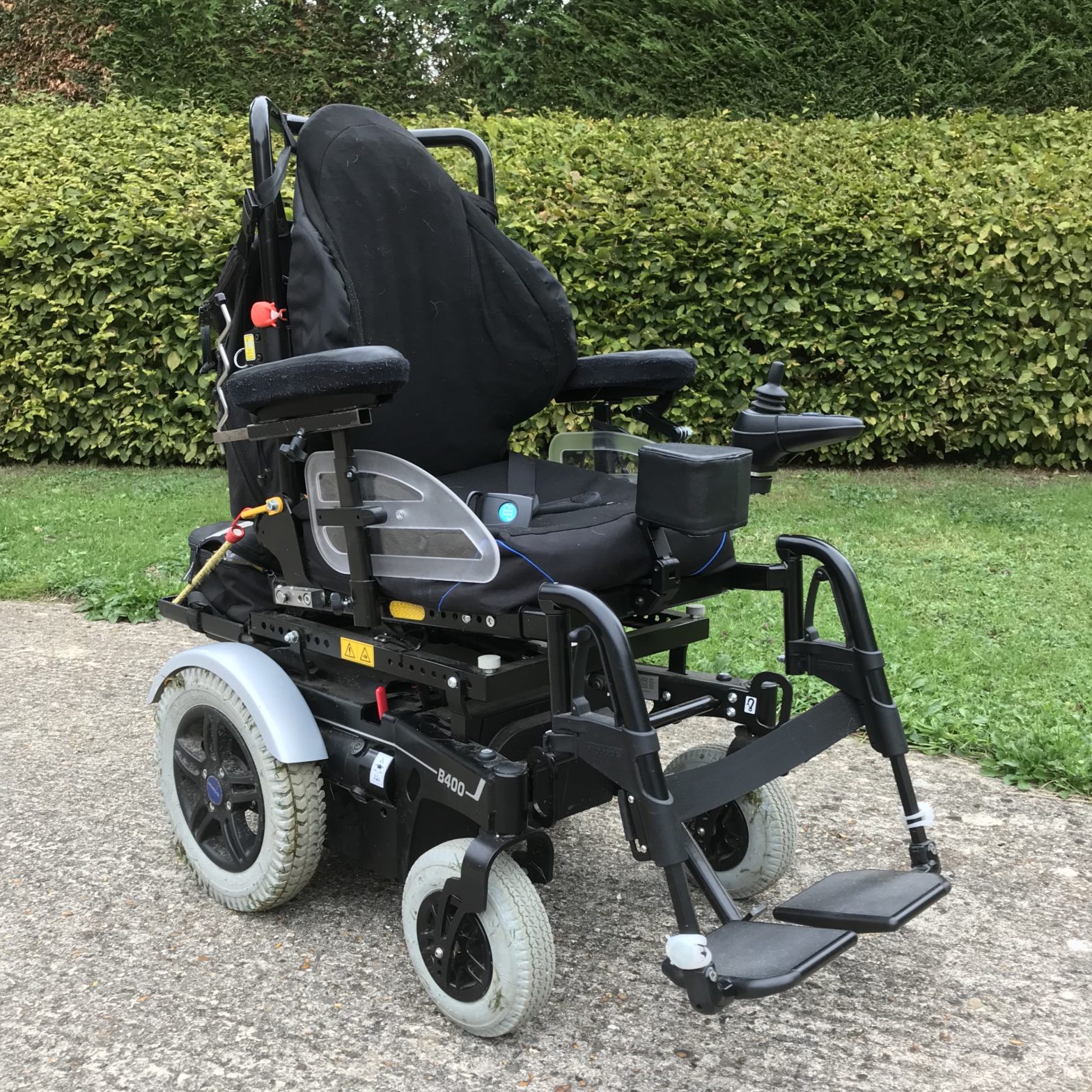Ottobock B400 – Powered Wheelchair
(Based on the users needs, lifestyle and preferences.)
Wheelchair Description:
Black-frame with rear-wheel drive, which is suitable to use indoors and outdoors. Two desk arms, a kerb climber, an electrically moveable backrest and a seat that will tilt backwards 45 degrees. Removable footplates, feet straps and a pressure-relieving pommel between my legs. Matrix TR backrest with Vicair air-cushioning, along with a Vicair Academy seat cushion.
Battery Life:
I’ve shopped in it all day, or been for longish walks, but have never tried to go more than about 5 miles at a time.
Source of Wheelchair:
RMS Via NHS Wheelchair Services
Diagnosis:
Paraplegia & Neurosarcoidosis
Personal Opinion:
Despite the official label, this is more an indoor chair than an outdoor one. It is narrow enough to fit through most doors and compact enough to use in quite tight spaces, and the kerb climber takes it up small steps – indoors or out. It is good on the flat, even on quite rough surfaces (my casters are the chunkiest I could get), reasonable at hills (helped by having smaller anti-tipping wheels than normal) but hopeless on a sideways camber. I regularly use it around town but have to be careful when passing a dropped kerb so that it doesn’t spin round sideways into the road.
As with most power chairs, a wheelchair accessible vehicle is the only sensible way to transport it, and I drive a VW Caravelle with a side lift. Putting tie-down positions out of reach of the occupant on any chair is unnecessary and, I believe, a design fault. Whether this is an issue will depend on the individual concerned, but it is important to someone like me who drives themselves and may not have anyone with me. An automatic tie-down system involving attaching stuff to the bottom of the chair would have been an option, but reduces ground clearance.
I have always preferred (and am able) to manage an alternative strapping system, and I regularly go over ground rough enough to require the maximum clearance possible. The kick strap going from one footplate to the other, to keep my feet falling back makes removing the footplates a bit awkward, but the heel-loops on offer were a worse option and I rarely need to remove the footplates anyway. All the conventional oxygen cylinder holders I know about hold cylinders high and vertical, sticking out at the back of the chair with knobs that I could neither read nor reach to turn; so being able to lie a cylinder sideways just behind the backrest worked relatively well. I also have a Matrix TR backrest to give lateral support, coupled with Vicair air-cushioning to give pressure relief, and a Vicair Academy seat cushion to cope with the asymmetry of my lower trunk.
I really had to fight for this chair. It took 1 year 8 months for the Wheelchair Services to finally produce something that really suited my needs, but it was worth it in the end. I would have preferred something with better outdoor capability, but that would have been at the expense of the narrow width and indoor capability. I am lucky enough to also have a very ancient outdoor/indoor chair that I keep for country walks, and the pair of chairs suit me well.
Features
HOW COMFORTABLE IS THIS WHEELCHAIR TO USE?
HOW EASY IS THIS WHEELCHAIR TO TAKE APART?
HOW EASY IS THIS WHEELCHAIR TO TRANSPORT?
HOW DOES THIS WHEELCHAIR COPE OFF-ROAD?
TOTAL RATING
(Based on an automatic calculation of the individual results above.)



Add Review